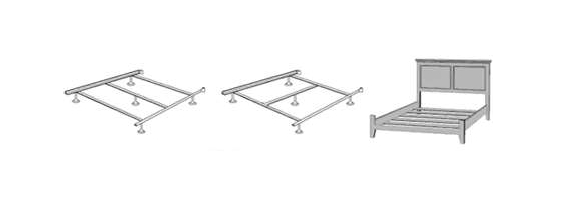This post may contain affiliate links for mentioned products. If you click a link and buy something, as an Amazon Associate I earn from qualifying purchases.
Everything You Need To Know About Mattress Warranty, When it comes to buying mattress, some people care more about foam density, ILD, coil counts, coil gauge, heights and other specifications but ignore warranty. Some others take warranty into account and usually choose the mattress with a reasonable warranty length. Actually, warranty is more like an insurance hedge against the risk of mattress failure. And it’s as important to a mattress as it is to consumer electronics. Sometimes it gives you more efficient and time-saving way to fix the issue. Length is a necessary but not essential factor when you’re considering the warranty. You need to know more details to find out what a reasonable or good warranty is for a mattress.
When it comes to buying mattress, some people care more about foam density, ILD, coil counts, coil gauge, heights and other specifications but ignore warranty. Some others take warranty into account and usually choose the mattress with a reasonable warranty length. Actually, warranty is more like an insurance hedge against the risk of mattress failure. And it’s as important to a mattress as it is to consumer electronics. Sometimes it gives you more efficient and time-saving way to fix the issue. Length is a necessary but not essential factor when you’re considering the warranty. You need to know more details to find out what a reasonable or good warranty is for a mattress.
Warranty length
Most manufacturers are offering 10 years limited warranty and some are offering much longer, 20 or 25 years. However, there’re a few brands on the market providing one year length warranty. As a matter of fact, 10 year around is long enough to cover the whole lifespan of mattress because these days mattress has an average lifespan of 8 to 10 years. 20 or 25 years warranty are usually offered by small brands and they just want to give you peace of mind to make you buy their products. And who knows if they will exist after 20 years. More importantly, 20 or 25 year warranty usually include non-prorated 10 years and prorated 10 or 15 years. That means you don’t need to pay for repair or replacement for first 10 years but do for last 10 or 15 years. A few brands like Signature Sleep are providing 1 year warranty for a mattress. That’s too short for a mattress and seems to imply that they barely have service after sale.
The length isn’t renewed or extended when you make a warranty claim and get the mattress repaired or replaced.
Basic requirements for claim
Each brand has their own requirements for warranty claim but requirements are more or less the same in most parts. So if you want to make a claim, make sure you fulfill basic requirements.
- Original purchaser
- Purchased from authorized sellers
- Retain receipt or original invoice
- Provide proper support for mattress and sleepers
What will void the warranty?
Satisfying basic requirements isn’t enough. Some brands have their specific requirements and if you don’t know, you probably have voided your warranty. Therefore, after you put all things together, find out the warranty and read. Generally, when you want to make a claim, you have to make sure your mattress in a good and clean condition, not soiled, free from any stains, burns, damages, mold, cuts, etc. That being said, you should maintain mattress very well as it just arrived. Some brands including Sleep Master, Zinus and Classic Brands state using heating pad or electric blanket will void the warranty. When you want to remove or laundry something like cover, you’d better check out if you’re allowed. And some require customers to laundry cover strictly according to their instructions or spot clean only.
What it covers : visible indentation
 Warranty only covers manufacturing defects in workmanship and material, of course including the cover. Different manufacturers have the same regulations about physical flaws during normal wear like loose or broken coils. Since there is no difference, we don’t say much about it. Here is a primary and important part you have to know about sagging or indentation depth. Mattress generates body impression or indentation overtime and excessive sagging depth will affect sleep comfort, support and spine alignment. Every manufacturer states the warranty covers how deep the indentation is. Tempurpedic, Tuft & Needle and a few brands tell their warranty covers the visible indentation greater than 0.75 inch during normal wear. Some other brands cover impression greater than 1.5 inches. As customers, we always want to repair or replace the mattress once feeling uncomfortable. Shallow indentation requirement is friendlier to us. Assume that you’ve already felt back pain caused by impression but you measure the depth only 1 inch, what you’re going to do? Keep sleeping with pain and wait for 1.5 inches to come?
Warranty only covers manufacturing defects in workmanship and material, of course including the cover. Different manufacturers have the same regulations about physical flaws during normal wear like loose or broken coils. Since there is no difference, we don’t say much about it. Here is a primary and important part you have to know about sagging or indentation depth. Mattress generates body impression or indentation overtime and excessive sagging depth will affect sleep comfort, support and spine alignment. Every manufacturer states the warranty covers how deep the indentation is. Tempurpedic, Tuft & Needle and a few brands tell their warranty covers the visible indentation greater than 0.75 inch during normal wear. Some other brands cover impression greater than 1.5 inches. As customers, we always want to repair or replace the mattress once feeling uncomfortable. Shallow indentation requirement is friendlier to us. Assume that you’ve already felt back pain caused by impression but you measure the depth only 1 inch, what you’re going to do? Keep sleeping with pain and wait for 1.5 inches to come?
What it doesn’t cover
 What warranty doesn’t cover is much more than what it does. For example, a normal increase in softness will be an issue for people who prefer firm bed but it’s out of range of warranty. Most mattresses soften after years of use. Bed height decreases over time after use, which is also not covered. If you want to make a claim because you find the mattress is too soft or too firm, that will not be accepted by manufacturers. If you’re going to buy online or concerned with firmness, choose those with free trials. An important thing you should be aware of is to use proper support for mattress, foundations, sleepers, etc. Sagging caused by improper support isn’t covered by warranty. Some brands like Tempurpedic and Dreamfoam Bedding even provide their standards for proper support:
What warranty doesn’t cover is much more than what it does. For example, a normal increase in softness will be an issue for people who prefer firm bed but it’s out of range of warranty. Most mattresses soften after years of use. Bed height decreases over time after use, which is also not covered. If you want to make a claim because you find the mattress is too soft or too firm, that will not be accepted by manufacturers. If you’re going to buy online or concerned with firmness, choose those with free trials. An important thing you should be aware of is to use proper support for mattress, foundations, sleepers, etc. Sagging caused by improper support isn’t covered by warranty. Some brands like Tempurpedic and Dreamfoam Bedding even provide their standards for proper support:
“A proper bed frame must continuously support the box spring/foundation. For king and queen sets, a rigid center support with at least 5 legs or a rigid center support with at least 5 hardwood cross-slats is necessary. (See photo below for clarification).” – Dreamfoam
“A proper bed frame must provide sturdy support for both the mattress and foundation; including a center support and having at least 5-6 legs for queen, king and cal king and 4 leg support for twin and full mattresses. For queen, king, and cal king slatted style bed frames, it is incumbent upon purchaser to ensure that the frame utilized offers ample structural support for the mattress and foundation in view of that particular slatted style frame.” – Tempurpedic
Some people lay the mattress alone directly on the floor and sleep on it. That’s not accepted by many brands and will void the warranty.
Warranty cost
To make a warranty claim isn’t completely free of charge as some manufacturers state and you have to pay transportation cost to or from nearest factory. Never ignore shipping fees for a mattress. Nowadays, many mattresses come in compressed and wrapped in a roll. When they stretch out it’s impossible to make them back to its original shape and put into original package. It takes up much more space and needs extra help to move. The cost will be definitely not small, $100 at least. There’re also some brands asking their customers to pay for replacement or repair during warrant period beside shipping cost. Better ones afford all cost even including shipping. Before you make a decision, try to figure out how much the warranty service will cost you.
Night trial not free
Before warranty period, most manufacturers give buyers a few days free trial, ranging from 30 to 120 days. There is a little difference among all manufacturers free trial policy. During free trial period, you will get full refund but you will be charged for transportation cost and if you took advantage of free shipping, you also need to return some money to reimburse the cost. According to our research, Tempurpedic has the highest shipping charge for return in trial days, ranging from $175 to $299. A few brands like LUCID, Linenspa, Brentwood Home, and Tuft & Needle provide completely free trial and their customers don’t need to pay shipping fee for return a mattress. But keep mind some state 100% complete free trial only applies to mattress directly purchased from their official website or specifically designated store.

